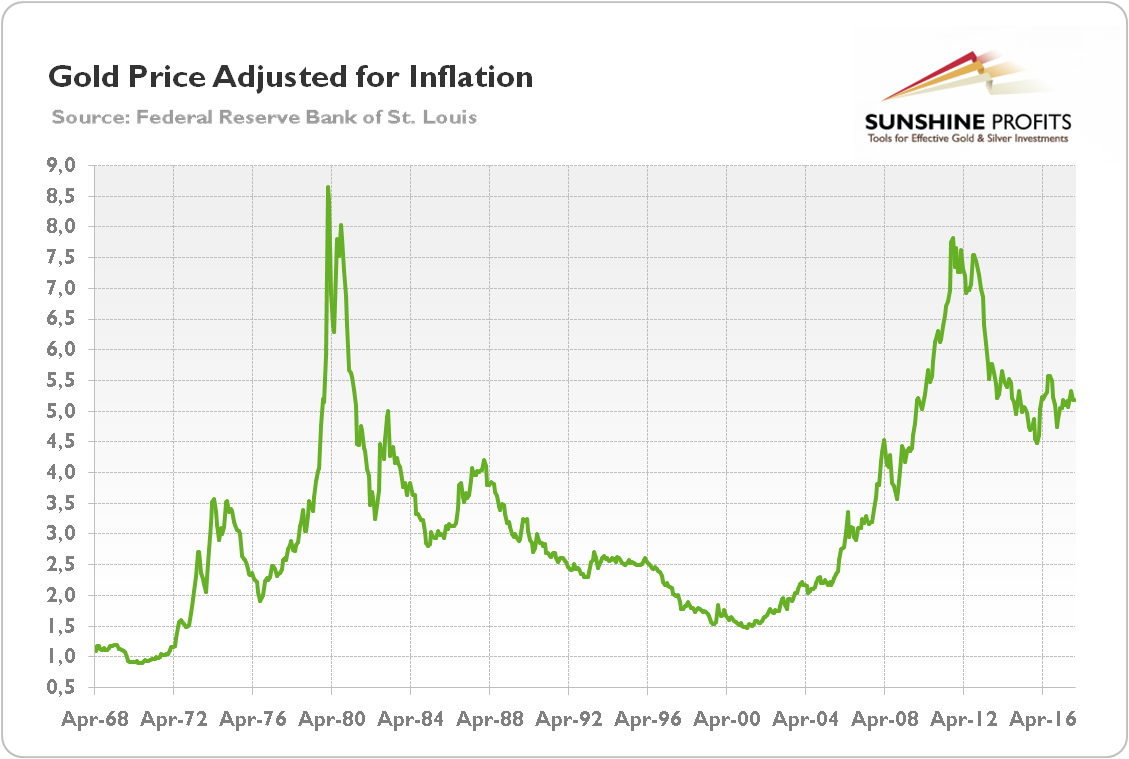The problem with fiat currencies is that they are prone to loss of purchasing power. The currency loses its purchasing power when prices increase (i.e. there is inflation), as consumers are able to buy fewer goods and services for the same amount of money. Conversely, money gains purchasing power when prices decrease (i.e. there is deflation) and consumers can purchase more stuff receiving the same nominal income. A concept related to purchasing power is purchasing power parity, which allows us to compare incomes among economies which use different currencies.
Contrary to fiat currencies which can be printed by the central banks (such as the Fed, the ECB or the BoJ) at will, the supply of gold is naturally limited. This is why historically people have chosen the yellow metal as money – thanks to its remarkable features, gold has been considered an excellent store of value and a hedge against inflation. There is even the adage which reflects the relatively stable buying power of gold: “With an ounce of gold a man could buy a fine suit of clothes in the time of Shakespeare, in that of Beethoven and Jefferson, in the Depression of the 1930s.”
Is that true? Well, it depends on the perspective. As one can see in the chart below, the real price of gold, i.e. adjusted for inflation, at least when measured by the CPI, has fluctuated substantially over time. However, real gold prices are currently higher than 50 years ago, which means that gold has not lost its purchasing power.
Chart 1: Gold price adjusted for inflation (calculated as the ratio of the London P.M. Fix relative to the CPI index) from 1968 to 2017.

To sum up, gold’s purchasing power is remarkably stable, but only over the very long run. The price of bread expressed in gold thousands of years ago is about the same as today. Yet over investment time horizons, gold’s purchasing power may vary (and sometimes it may even fall, as in the 1980s and the 1990s). Keep this in mind, when investing in gold.
